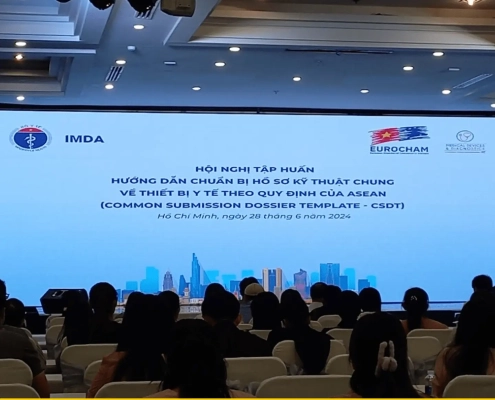Come grow with us in the US in Thailand in China in Korea in the Philippines in Taiwan in Hong Kong
Contact Us
US: +1 512 898-9222
SG: +65 8800-3197
EMAIL: Inquiry@asiaactual.com
Philippines Publishes New Draft IVD Regulations
Published on: February 2nd, 2022
New Administrative Order Expected Later This Year
The Philippines FDA published new draft IVD guidance for public review and comment in early January 2022. This step clears the way for form adoption of new IVD regulations via Administrative Order expected later this year. This action has been anticipated for more than a year and is in line with the Philippines commitment to harmonize regulations as per the ASEAN Medical Devices Directive (AMDD).
From 2014 to the present, only select few IVD devices (listed in FDA Circular No. 2014-005) have required a Certificate of Product Registration to be imported and sold onto the market in the Philippines. All other (non-Notified) IVD devices have been exempted from the process and only required the importer to have a valid License to Operate issued by the Philippines FDA. The new IVD Rules will subject all IVD devices to a premarket notification or registration process. Manufactures, importers and distributors of IVD devices in the Philippines should prepare for these new requirements.
List of Notified IVD Devices
- HIV, HBV, HCV and syphilis
- Drug screening test
- Blood Typing Sera
- Anti-human Globulin Reagents
- Potentiators such as enzyme, LISS and albumin
- Column Agglutination test for crossmatching & blood typing
- Pregnancy test kits/reagents
- Leptospirosis test kits/reagents
To better manage the extraordinary workload that will be required of industry as well as regulators the new requirements will be implemented in a stepwise manner. Under Phase 1, Notified Class B, C and D devices (as in listed in FDA Circular No. 2014-005) will require a Certificate of IVD Registration (CIVDR). Note that existing Certificates of Product Registration (CPR) issued under the old Rules will remain valid until their expiration date. Additionally, all Class A device will require a Certificate of IVD Notification (CIVDN). Non-Notified Class B, C and D devices must apply for initially apply under the CIVDN requirements; then at renewal a CIVDR application will be required. Any existing Certificates of Exemption (COE) will likely remain valid during a grace period (yet to be defined).
Philippines’ Draft IVD Guidance Overview
Applications are first subject to pre-submission review at which device classification, grouping and completeness of documentation will be verified by the Center for Device Regulation, Radiation Health and Research (CDRRHR). Technical data requirements are as per ASEAN MDD Common Submission Dossier Template (CSDT). Once approved, the product will receive a CIVDN or a CIVDR number that must be include on the labeling. All documents will need to be submitted in English.
OTHER IMPORTANT ASPECTS OF THE IMPLEMENTATION PLAN INCLUDE:
- Notified medical devices will be re-classified according to AMDD risk classification
- Validity of Class A CIVDN & Class B, C, and D CIVDR will be 5 years
- Validity of initial Class B, C, and D CIVDN will be 2 years
- Government processing fee for initial CIVDN/CIVDR application is PhP7,500 (about US$150); and PHP5,000 (US$100) for renewal applications (pricing is subject to future adjustments)
- All Medical Devices and IVD that are not included in the scope of initial implementation shall be considered non-regulated products; importers License to Operate (LTO) may be provided for customs clearance in lieu of a COE.
- Administrative data requirements include:
- Letter of authorization copy with Notarized Declaration Letter of Authenticity
- ISO 13485 copy with Notarized Declaration Letter of Authenticity
- Requirement for Certificate of Free Sales (CFS) has been eliminated
- Copy of registration from country of origin with Notarized Declaration Letter of Authenticity
- Color picture of the device from all sides
What is the Validity of New CIVDNs and CIVDRs
Class A CIVDNs and CIVDRs will be valid for 5 years while class B, C, and D IVDs registered under the notification process during the transition will be valid for 2 years. At the end of the 2 years, the class B, C, and D IVDs will need to renew and obtain a CIVDR which will then be valid for 5 years. This follows the implementation phases of the new medical device regulations.
What is the Grouping Guidance for IVDs Under the new Regulations
Per point 4, it is expected that grouping products together into one application and certificate (CIVDN or CIVDR) will continue to be difficult strict as is the case for medical devices. While application fees remain lower than other markets in the region, the Philippines FDA does often require separated certificates for variations in brand name, materials, etc. which require separate fees even if one CSDT application is submitted.
What Document Are Required for IVD Device Registration in the Philippines?
Document requirements are expected to follow ASEAN AMDD guidance and more information on specific draft requirements can be found in the following Annexes provided with the draft IVD guidance:
- Annex A – Legal Requirements for Application for the Notification of IVD under Class A and Registration of IVD under Class B, C and D
- Annex B – Technical Requirements for Application for the Notification of IVD under Class A
- Annex C – Technical Requirements for the Initial Registration of Class B, C, and D IVD
The summary list of requirements for the initial registration of Class B, C and D IVD can be found in Annex D. - Annex E – Requirements for the Renewal of Notification/Registration of IVD for All Classifications
- Annex F – Requirements for Application for the Certificate of IVD Listing
What Are the In-Country Testing Requirements for IVD Registration in the Philippines?
The plan is to have all IVD Registration applications to have performance test data generated by locally, approved test facilities such as the Research Institute of Tropical Medicine (RITM). According to point 9 of the draft IVD guidance, Class B, C, and D IVD applications will need to be endorsed by a FDA Common Services Laboratory, national research laboratory (NRL), or other FDA accredited/recognized laboratory for performance evaluation. Additional guidance on the performance evaluation requirements of IVDs will be covered by a separate FDA Circular. In-country testing fees will be separate from application fees and will be provided by the RITM or another compliant laboratory.
Grow With Us
Asia Actual specializes in helping medical device manufacturers grow their sales in Asia with experienced, bi-lingual commercial and regulatory experts on the ground in each market. Contact Asia Actual today to see how new regulatory developments may affect your business in the Philippines.







